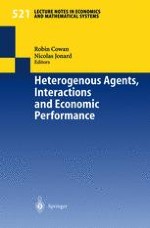In traditional economics models of perfect competition agent's interactions are all mediated through the market. Interactions are anonymous, global and indirect. This is a powerful model, but we see many instances in which one, and sometimes all, of the previous characteristics fail to hold true. The type of agent you are, or your identity, can affect the type of interaction we have, and most surely the relationship between micro-behaviour and macro-phenomena in non-trivial ways. This book contains a selection of papers presented at the 6th Workshop on Economics with Heterogenous Interacting Agents (WEHIA). The contributions show that work done in other fields like evolutionary biology, statistical mechanics, social network theory and others help us to understand the way in which economic systems operate. Virtually all of the papers presented in this volume draw on some aspect or other of these varied approaches to related problems.
